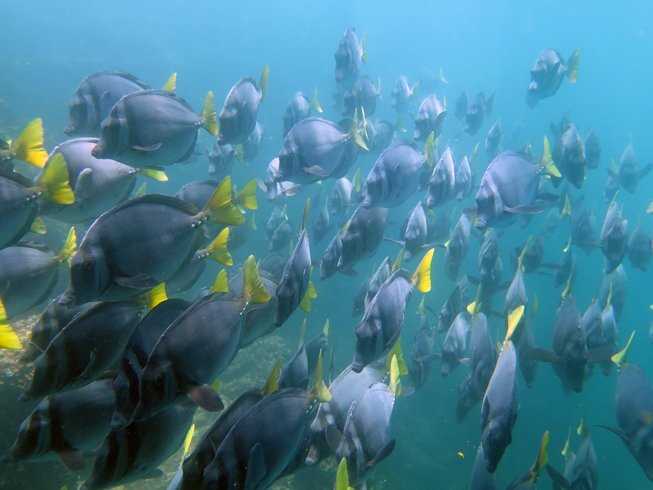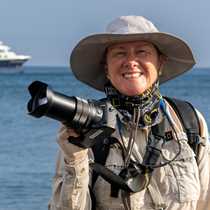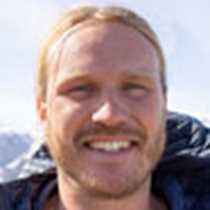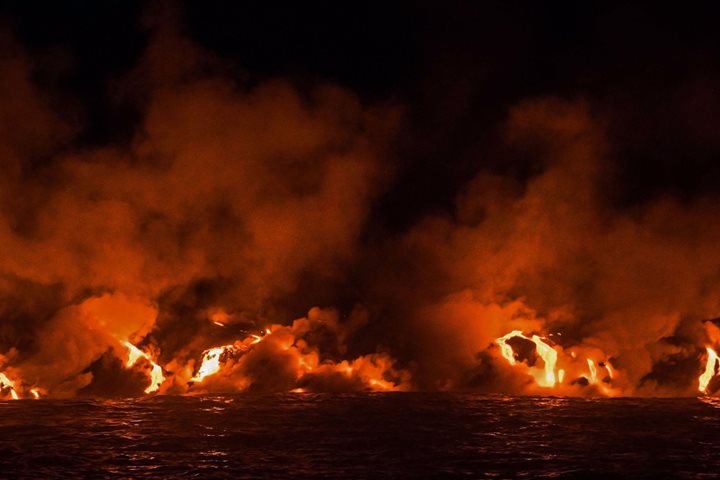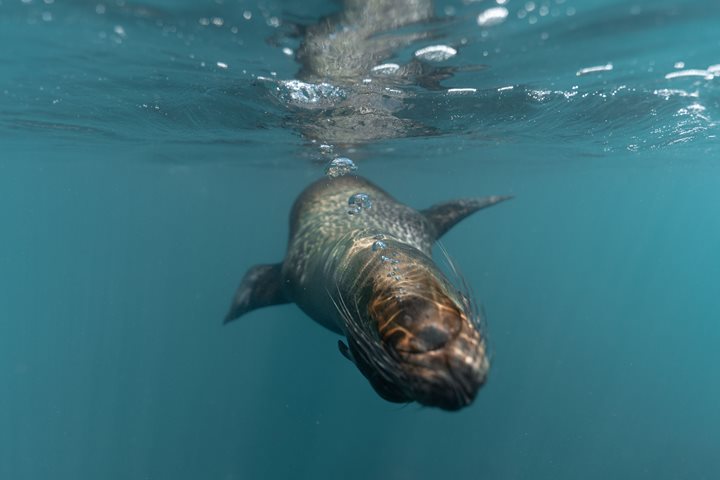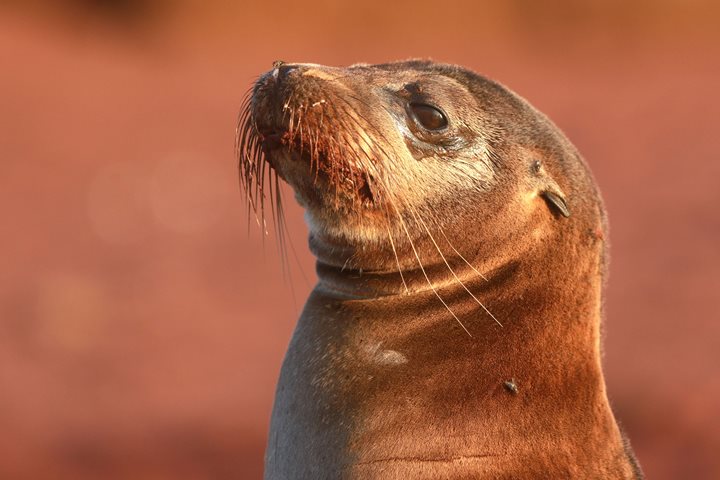I was up before the sun, I usually am, and the entrance into Darwin Bay was a great incentive. Today the water was calm – very calm. The outside temperature at 6:00 a.m. was already 74 F, 23.2 C. However it is the humidity at this time of year that makes the difference. Once more I was encouraging our guests to get up early, well worth the effort to visit one of the most extraordinary places on earth.
This island is home to well over a million birds of various species: red-footed boobies, great frigate birds, swallow-tailed gulls, Nazca boobies, four species of Darwin’s finches, Galapagos mockingbirds, Galapagos storm petrels, short-eared owls. Everyone had staked out their little patch to raise a family- some on the ground, some in the trees and bushes, some in holes along the cliffs.
The morning landing was as easy as it can possibly get, on small bits of coral rubble and sand. The morning light quickly took on a higher and higher angle. Birds were now flying all around with red-footed boobies dodging the aerial attacks of the frigates coming for their nesting twigs. From our human standpoint it would seem there is plenty for all. But reality is that twigs, good, clean unused twigs, are in short supply (no-one wants to introduce parasites into their new home).
By the time everyone had returned on board, and eaten breakfast, it was obvious we needed to get wet. Our last chance to go for a deep-water snorkel, kayak, or try out a paddle-board was along the inside cliff walls of the bay.
Genovesa is known for the presence of Moorish Idols, enormous parrotfish, and the possibility of seeing sharks. Not every visit is conducive to searching out these impressive creatures, but today the sea was cooperative and relatively calm, so off we went, three boatloads full!
Purple surgeonfish, Moorish Idols and huge bumphead parrotfish are renown here and some lucky folks got looks at Sphyrna lewini, scalloped hammerhead! Although some missed the shark, others got a fabulous view of a school of golden rays as they maneuvered below us – in one direction and then the other!
The second visitor site on this island established by the Galapagos National Park is known as “Prince Philip’s Steps”. Indeed, it was named after HRH Prince Philip, Duke of Edinburgh, who explored this corner of the island in 1965 while visiting on the RY Britannia. The main purpose of that visit decades ago was to check out the progress on the new installations of the Charles Darwin research Station, recently established in Puerto Ayora, Santa Cruz Island.
The trail starts up a narrow crevice which one has to climb to reach the top, 90 feet above. With a bit of concrete and a couple wooden handrails, it leads people into a different world. A large colony of Nazca boobies was the first impression of another world, then the red-footed boobies were seen and heard in the trees, and soon enough the male frigates caught our attention when they shimmied and rattled to attract females to their chosen nest-site. They looked glorious with their inflated red pouches and glossy green feathers lifted on their backs, fluttering with the intensity of their calls.
The smells, sounds, sights and feel of this island is like no other. This island is unique in the world and there is no other like it, even within the uniqueness of the Galapagos itself.
I imagine this last impression of Galapagos will remain strong in the minds of our guests for many years to come.

